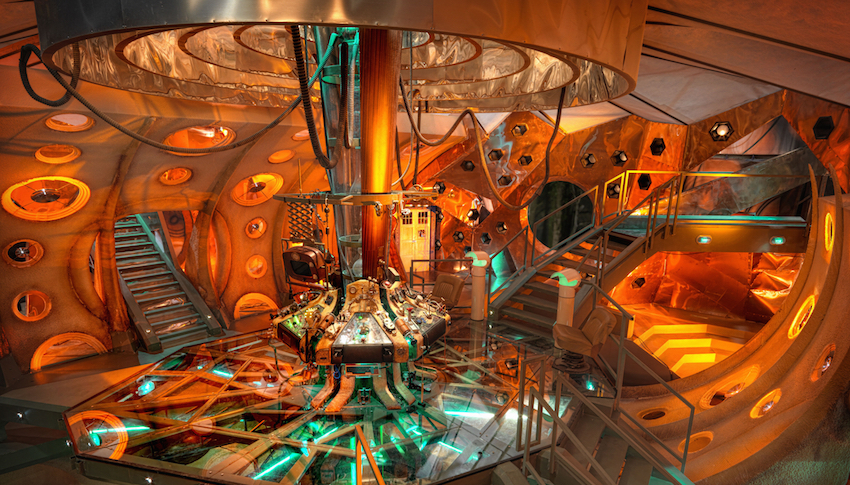Friday Frivolity: Our Lady of the Tardis

Okay, this is a bit of a weird one, but I think it says a lot about the way my mind works. Besides, it’s April 1st, and if I can’t post a tongue-in-cheek article on this day, when can I?!
I would like to begin by asking a question: what do these two things have common?


Vehicle of the (Time) Lord
So what is the similarity between Mary, the Mother of God (“Theotokos”), and the Tardis from the TV show Doctor Who?
In case you’re unfamiliar with the show, the main character is “The Doctor”, a Time Lord who travels by means of a vehicle known as “The Tardis”. The Tardis appears to the outside world to be a small, unassuming blue Police Box but, in addition to having the ability to travel through space and time, it possesses strange physical properties which make its interior significantly larger than its outside:

The The-Who-tokos…
I see two main parallels between the Theotokos and the Tardis. The Tardis allows the Doctor, who is a Time Lord to travel through time and space. Mary provides the means for the Lord, the Divine Physician to enter space and time at the Incarnation.
The second parallel is less obvious. As I mentioned above, the Tardis has far more space on the inside than the outside. It might surprise you to know that there’s a similarity with Mary! This is seen in an icon at my parish which is known as the Platytera (ton ouranon):

I’ve previously written about the meaning of red text on the icon (“ΜΡ ΘΥ“), but in order to understand this second parallel, we need to look at the Greek text in the icon which is written in blue:
H Πλατυτέρα τῶν Ουρανῶν
More spacious than the Heavens
What is this icon describing as “more spacious than the Heavens”? It’s talking about the womb of Mary. The icon is drawing our attention to the wondrous fact that our infinite, transcendent God who made the universe takes up His abode inside Mary as a baby. This actually makes the Tardis’ space-bending abilities look rather poor in comparison!
It was a homily by Proclus of Constantinople which sparked the Nestorian heresy, when Nestorius objected to Mary’s title of Theotokos (“God-bearer”). Proclus wrote many homilies praising the Virgin and in one of them he speaks of Mary’s womb in these exalted terms:
Then let us admire the Virgin’s womb, a womb wider than creation. For she, without difficulty, enclosed within her him who cannot be contained in anyone. He who holds his Mother, along with everything else, in his hand, was held by her in her womb
– Proclus of Constantinople, Homily 4
Although this post is published on April 1st, I’m actually writing it during the Great Fast (Lent), which means that on Sundays we celebrate the Divine Liturgy of St. Basil. In the hymn known as the “Magnification”, this awesome mystery is alos proclaimed:
In you, O Woman Full of Grace, all creation rejoices: …
Boast of Virgins from whom our God took flesh
and became a child while remaining God from before all time,
He made your womb a throne, setting it apart,
a room more spacious than the heavens.
In you, O Woman Full of Grace,
all creation rejoices, Glory to you!
– Magnification of the Great Fast
I bet you never knew there was so much Marian theology in Doctor Who.
So that’s how your mind works…
As one who also appreciates Our Lady and the Doctor, good tie-in today.
Thanks